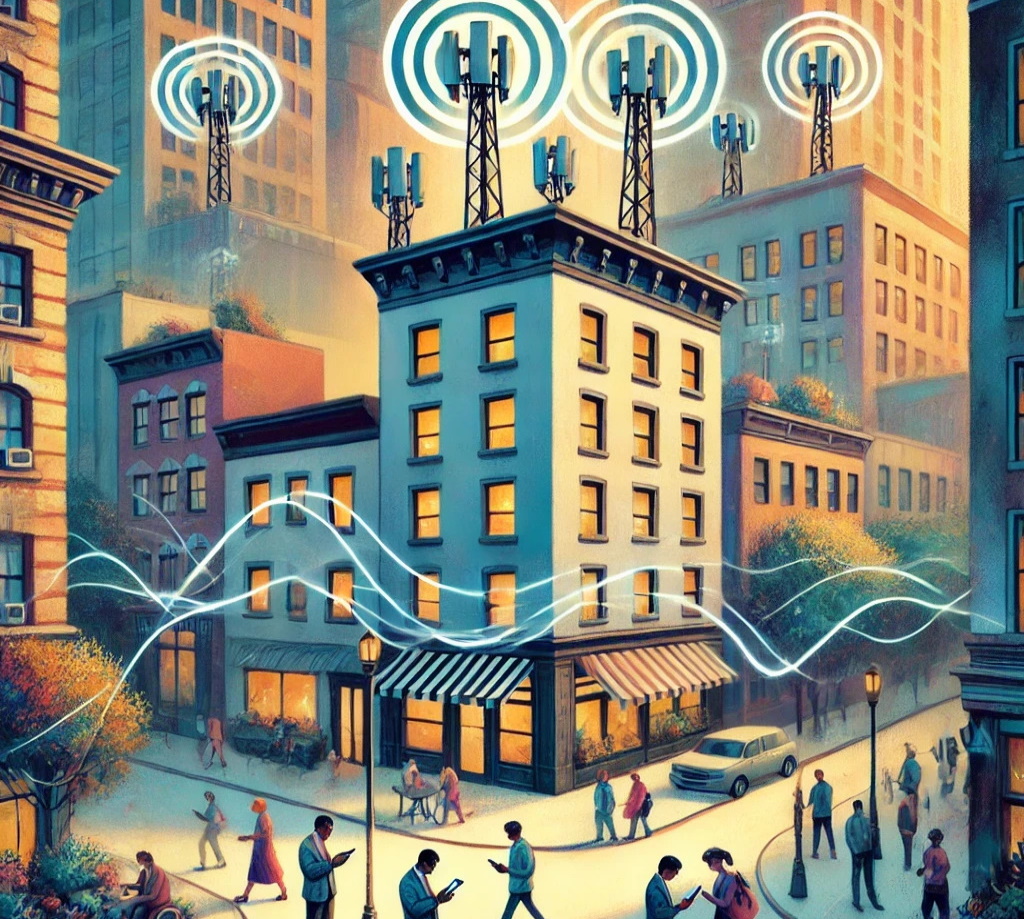As mobile phone networks become increasingly efficient with each generation, from 4G to 5G and now en route for 6G, there is growing concern about their impact on the environment and our health. Over the past forty years, every decade has seen a new generation of mobile networks emerge, the progress of which has been gaged mainly on the basis of performance enhancement. For a long time, these changes have come about without any proper consideration for the energy consumption or electromagnetic emissions of these networks.
Indeed, the sole aim of the first generations of mobile networks was to meet quality-of-service technical requirements. “When the 2G and 3G networks went into operation, energy consumption was not an issue. The goal of GSM was to transmit as much data as possible for the base stations to receive”, says Joe Wiart, a Télécom Paris researcher who specializes in dosimetry. It wasn’t until 4G arrived that efforts were undertaken for better energy management, in particular by shutting down certain equipment when demand was low, at night for example. But with the emergence of 5G and, in the very near future, 6G, these efforts may not be enough. The growing complexity of infrastructures and planned new uses require us to go further in reconciling performance and responsibility.
This is the reason behind the Just Enough Network (JEN) project of the ‘5G and Future Networks’ PEPR. The project proposes to create truly ‘agile’ networks that are capable of adapting their consumption to the precise needs of users, while ensuring optimal quality of service. “So connected devices and networks need to be efficient, to keep to a minimum both energy consumption and levels of exposure to the electromagnetic fields generated by these systems”, emphasizes the Télécom Paris researcher who co-leads the project. “In short, we must seek restraint!” This is just what the JEN project aims to do, by inventing networks that consume and emit ‘just enough’, without surplus or wastage.
A compromise between quality of service, energy efficiency and emissions
Energy efficiency is, therefore, at the core of the work carried out by the different research teams involved in the project, from CNRS, CEA and IMT. Since IoT sensors were optimized, several strategies have been implemented, including the overall management of infrastructures. For example, IoT sensors consume little individually, but represent a major energy challenge when deployed on a large scale. The aim is to make them as autonomous as possible while reducing their overall energy impact.
Simultaneously, the teams are exploring approaches to the dynamic adjustment of infrastructure energy consumption. Because “optimized energy consumption does not mean a system is entirely energy efficient. Even for a system that performs well, if it is permanently open, the whole network constantly consumes and transmits”, explains Joe Wiart. The different working groups therefore need to develop models that adjust installations to actual needs, avoiding not only unnecessary consumption but also prolonged exposure to electromagnetic fields (EMF), of which the impacts on health are not yet known. They are therefore looking for the best possible compromise between quality of service, consumption and exposure.
Minimizing exposure: societal issue and conundrum
Exposure to EMF is a fundamental sociotechnological issue in the roll-out of 5G and of telecommunication technologies in general. Although proof of harmful effects has yet to be established, this question remains very much a topic of public discussion. Indeed, trust is an important factor in the social acceptability of a technology, and that trust is based mainly on the guarantee of its safety. The quest for the optimum between minimum exposure and acceptable quality of service is, in fact, an extremely tricky one.
At first glance, reducing antenna density mechanically reduces the exposure caused by networks, but also affects the quality of service. Insufficient coverage causes mobile phones to emit at higher power to maintain the connection, hence canceling out the benefits of reducing the number of antennas. Another solution is to increase the number of low power transmitters, but the construction and operation of all these transmitters would have repercussions on the overall energy footprint. The JEN project, therefore, aims to strike the best possible balance between these different constraints, to provide a globally acceptable solution in terms of both energy and health.



 Optimized energy consumption does not mean a system is entirely energy efficient.
Optimized energy consumption does not mean a system is entirely energy efficient.

